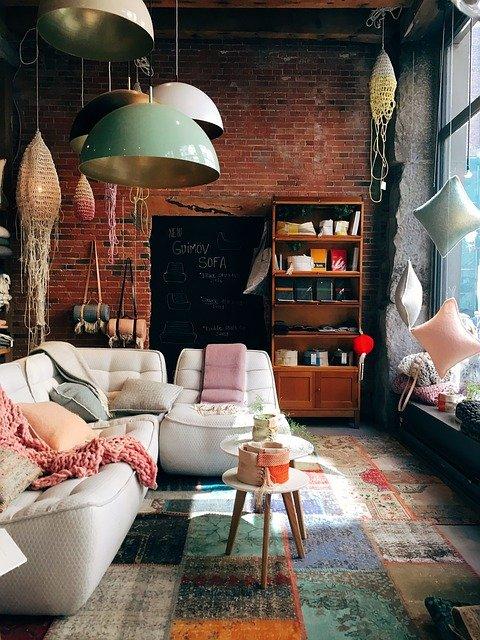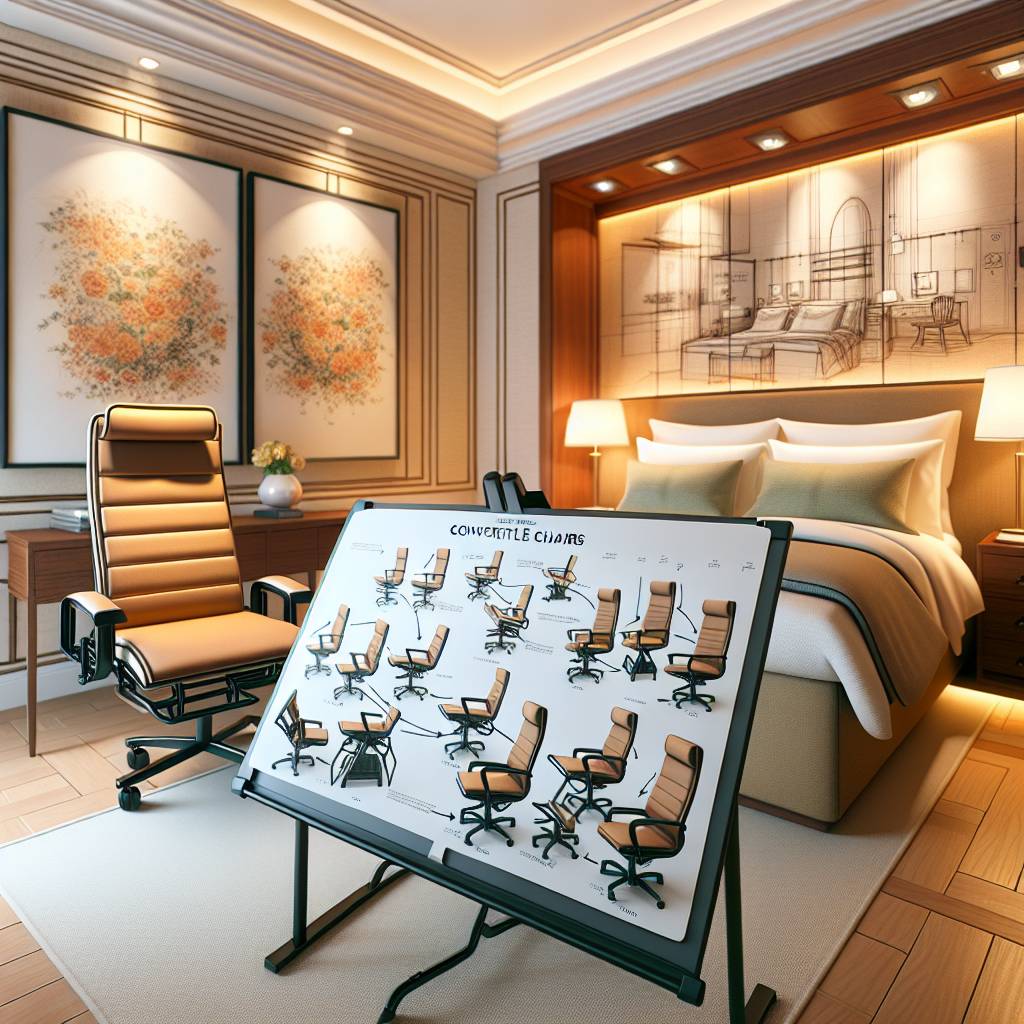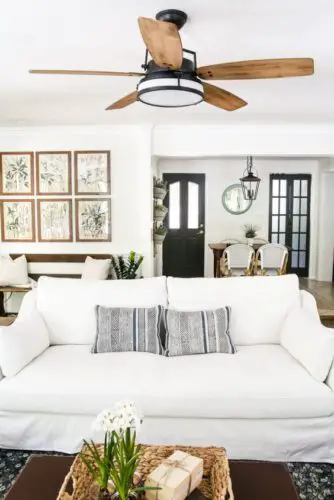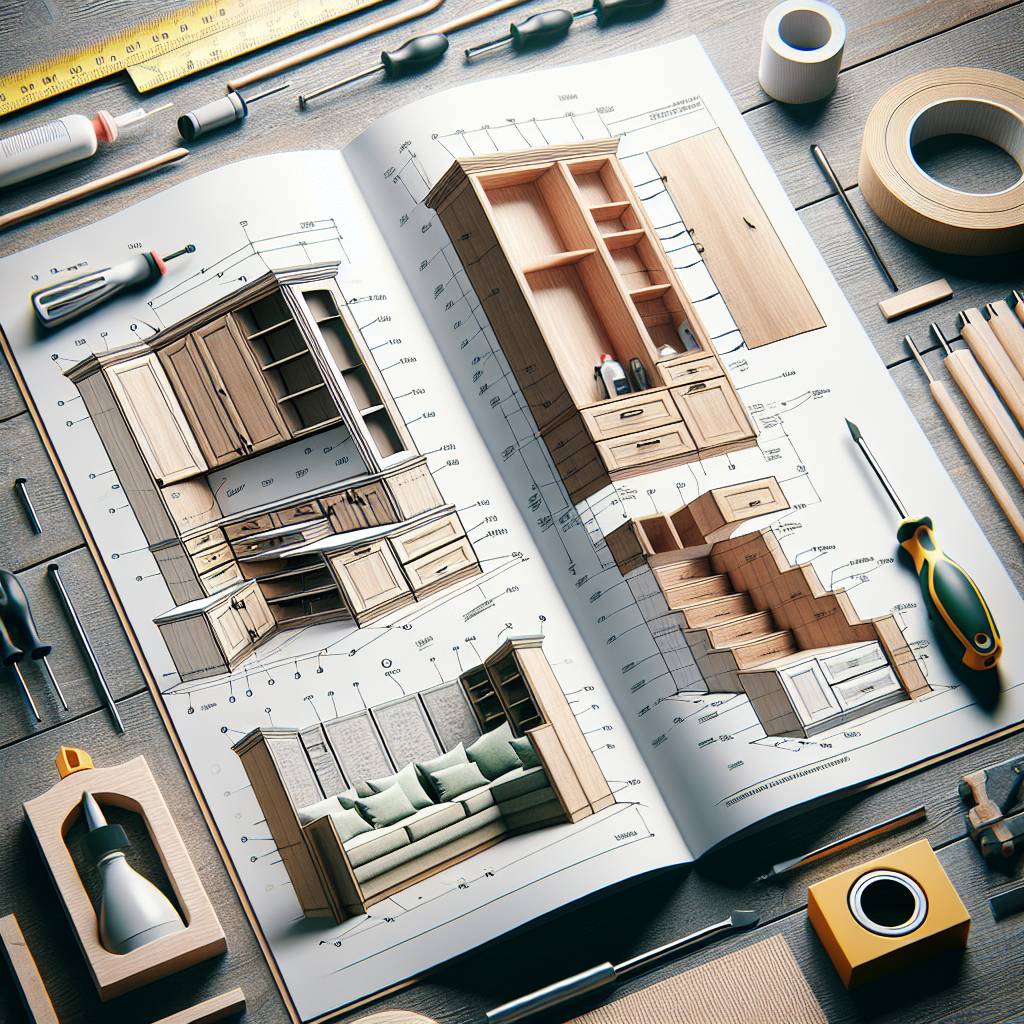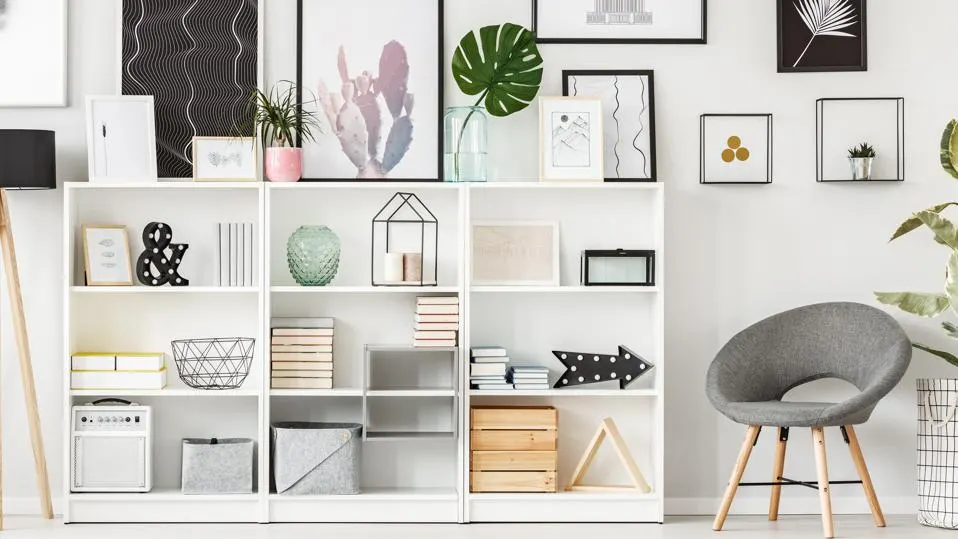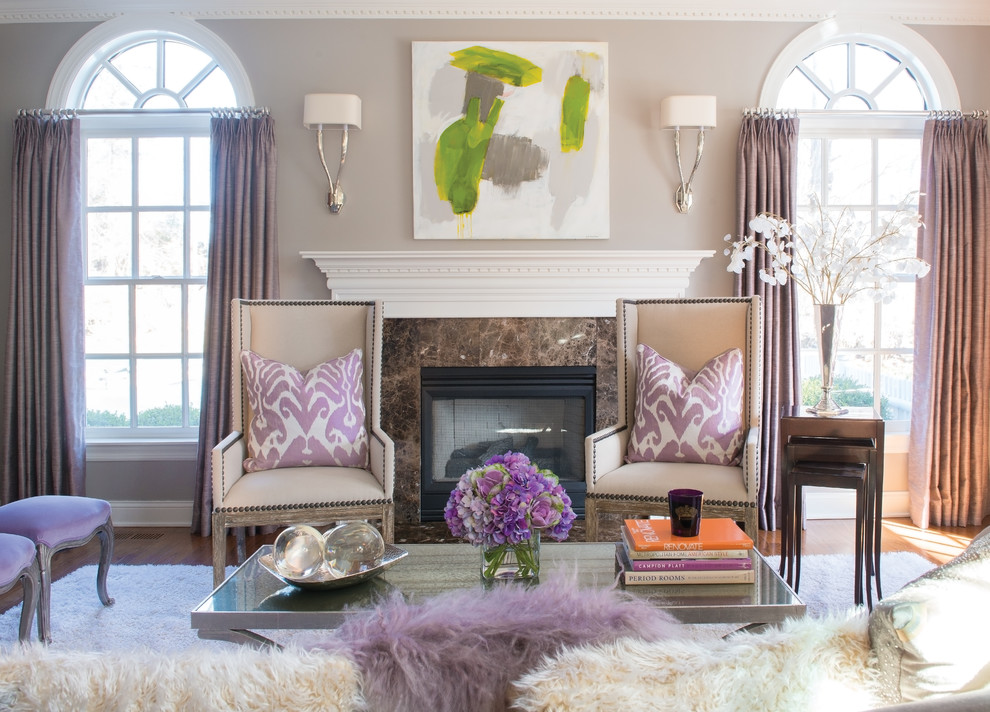Harnessing the timeless wisdom of feng shui principles in living room arrangement isn’t just about aesthetics—it’s a strategic move to align your daily environment with positive energy. Why settle for an ordinary space when you can infuse your living room with harmony and balance? By integrating these ancient guidelines, we transform our most frequented spaces into sources of tranquility and prosperity. Let’s dive into how applying simple living room tips rooted in feng shui can revitalize not only your space but also your well-being.
From selecting furniture with intention to positioning each piece for optimal flow, the principles at play are more than mere design choices; they’re stepping stones to crafting a living room that resonates with your life’s rhythm. Ready to reshape your habitat for the ultimate comfort and positivity?
Clearing Clutter for Chi Flow in Living Rooms
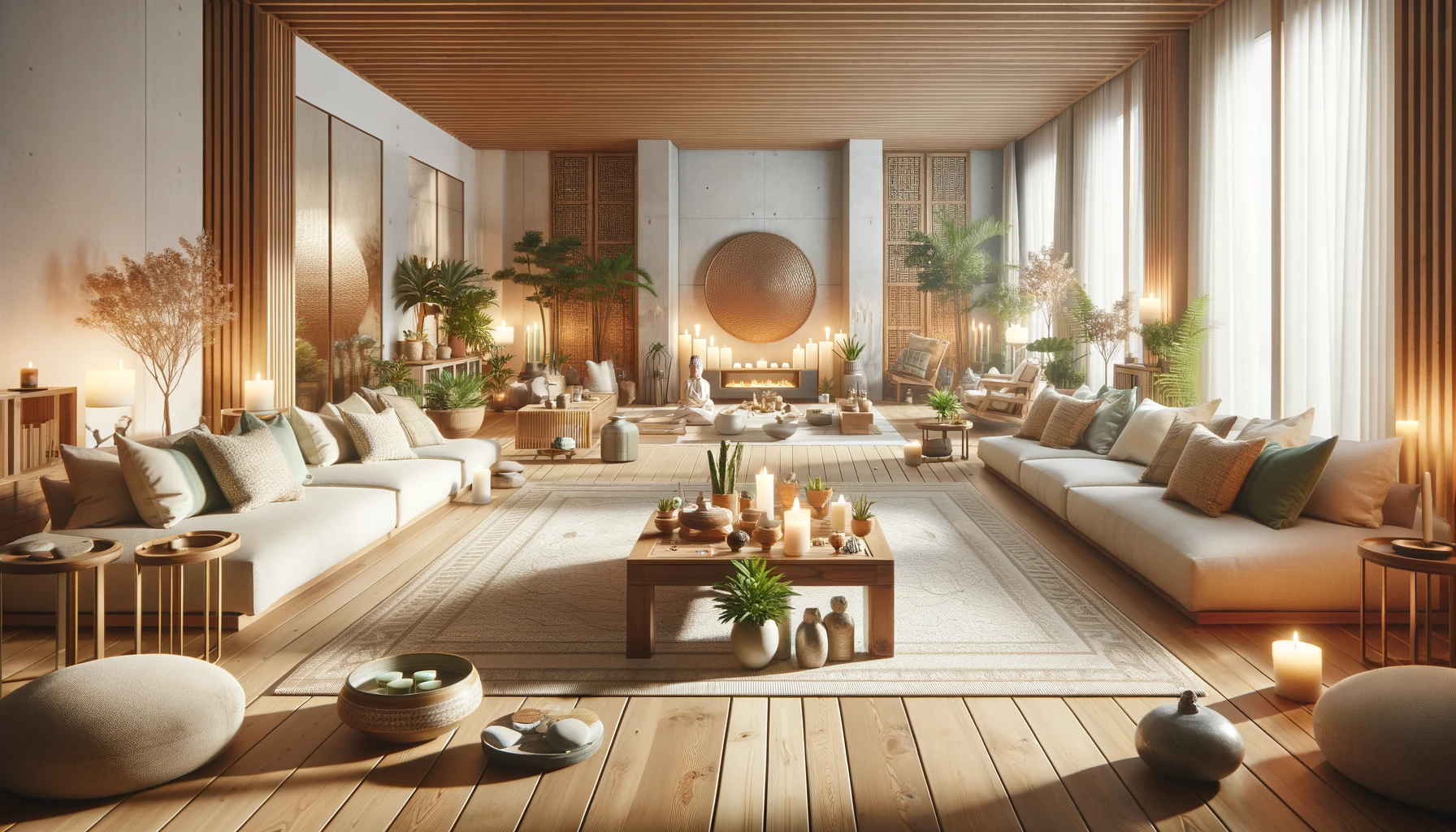
Impact of Clutter
Clutter acts as a blockage. It stops the smooth flow of chi in living spaces. A cluttered room feels stagnant and unwelcoming. This can lead to feelings of stress and unease.
To improve energy, start by removing items you no longer use or love. Think about how each object makes you feel. If it doesn’t bring joy or serve a purpose, it might be time to let it go.
Decluttering Techniques
Effective decluttering requires a plan. Start with one area at a time instead of tackling the whole room at once. Use boxes or bins to sort items into categories: keep, donate, recycle, and trash.
Here are some steps to follow:
- Choose one corner of your living room.
- Remove everything that doesn’t belong there.
- Clean the space thoroughly.
- Only put back what enhances the room’s chi.
Remember to clean under furniture too! Dust and debris hiding there can also affect energy flow.
Organizing Spaces
After decluttering, organize what remains in your living rooms efficiently:
- Use shelves for books and decorative items.
- Keep remote controls in a drawer or basket.
- Maintain clear pathways for easy movement around furniture.
An organized space not only looks better but also promotes positive energy circulation throughout the room.
Positive Energy Flow
A clutter-free space invites more than just good qi; it brings peace and harmony as well:
The absence of clutter allows air to move freely around your living rooms—this is essential for good feng shui practices which state that fresh air carries nourishing qi throughout your home.
Balancing the Five Elements for Harmonious Living
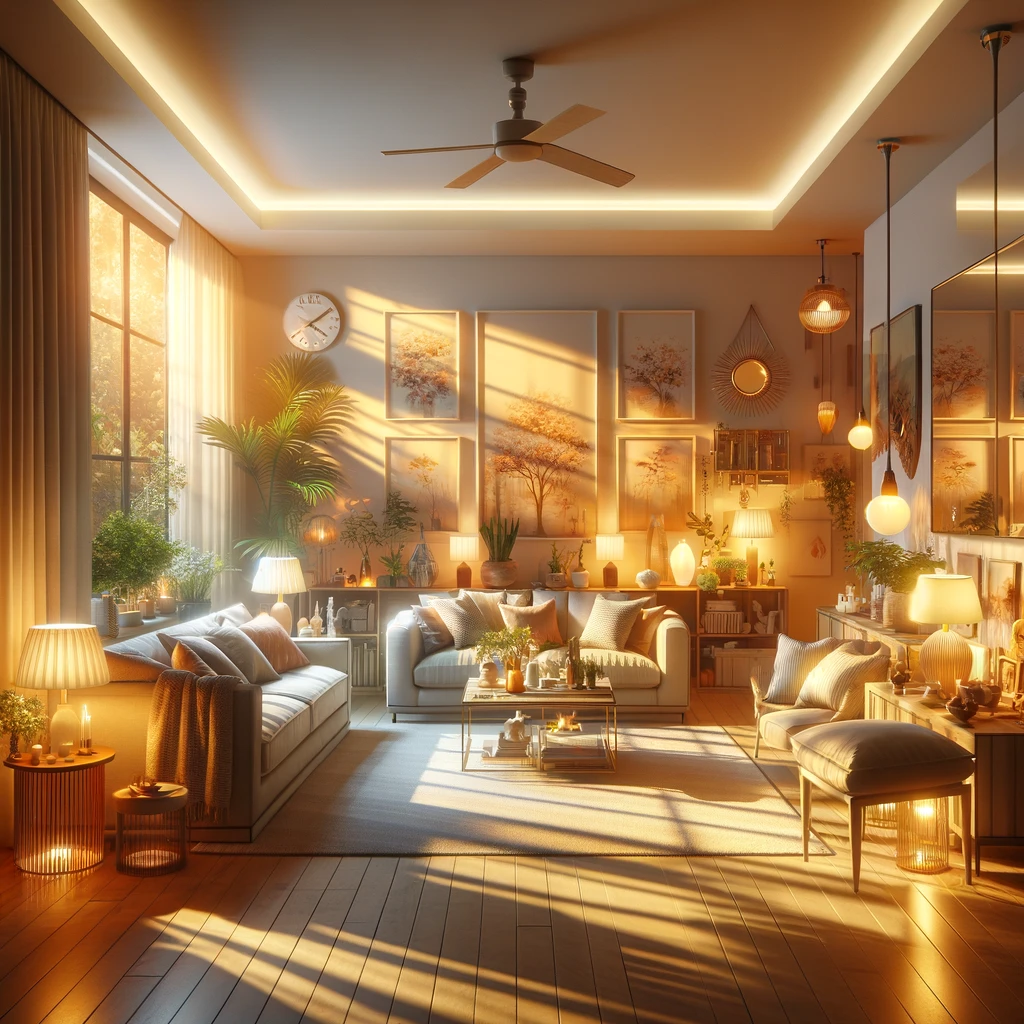
Element Introduction
The five elements of feng shui are essential to creating a living space that promotes harmony and balance. Each element—wood, fire, earth, metal, and water—brings different energies into your home. Understanding these can help you design a room that enhances your life force.
Wood symbolizes growth and vitality. To incorporate wood in your living room, consider wooden furniture or plants. Fire represents passion and energy; candles or red accents can invoke this element’s power.
Harmony Creation
Incorporating each element helps maintain equilibrium in your living space. Too much of one can disrupt the balance needed for optimal chi flow—a concept already touched upon when discussing clutter clearance.
To represent earth, which stands for stability and support, add ceramics or stones to your decor. Metal signifies logic and clarity; metal frames or sculptures will do well here. Lastly, water denotes wisdom and serenity; an aquarium or fountain could be perfect additions.
Design Tips
Here are some tips to blend these elements seamlessly into your living room:
- Use colors associated with each element: blue for water, red for fire.
- Mix materials like a metal lamp next to a wooden table.
- Balance is key; don’t let one element overpower others.
Remember to keep things proportional so as not to overwhelm the space with too much energy from any single source.
Strategic Furniture Placement and Commanding Position
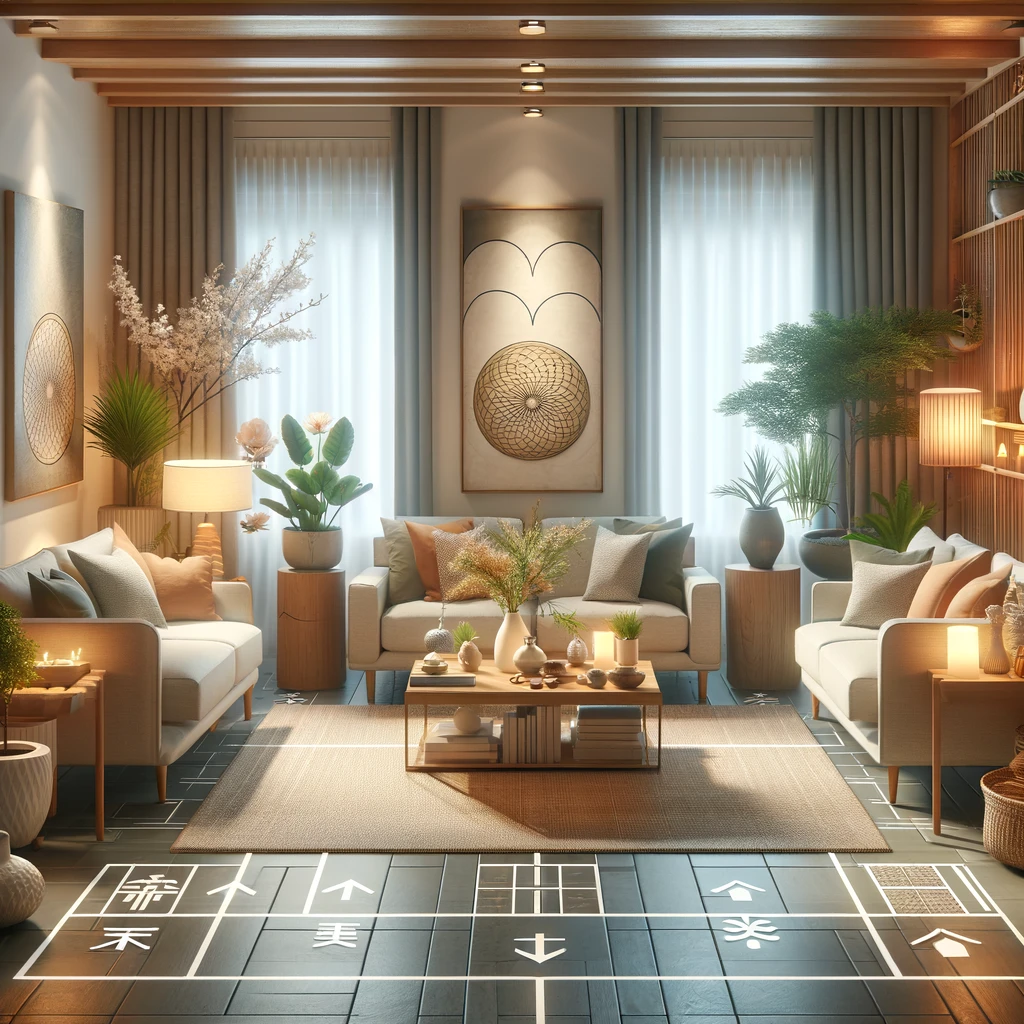
Furniture Arrangement
The layout of your living room furniture is a cornerstone of Feng Shui. It’s not just about how things look but how energy, or ‘chi’, flows. The right arrangement can create a sense of calm and balance.
When placing your couch, aim for the command position. This means positioning it so you can see the door while seated. However, don’t place it directly in line with the door; this is seen as aggressive in Feng Shui terms.
A coffee table should be central to create harmony and accessibility. Place it within reach of seating areas to promote comfort and conversation.
Command Position
In Feng Shui, the command position isn’t only about power; it’s about protection and control over your space. Your sofa should be against a solid wall for support—this symbolizes strength.
Make sure no one sits with their back to an entrance or window—it’s considered vulnerable and unsettling. If unavoidable, hang a mirror where they can see the reflection of the door behind them.
Optimizing Seating Arrangement for Energy Flow
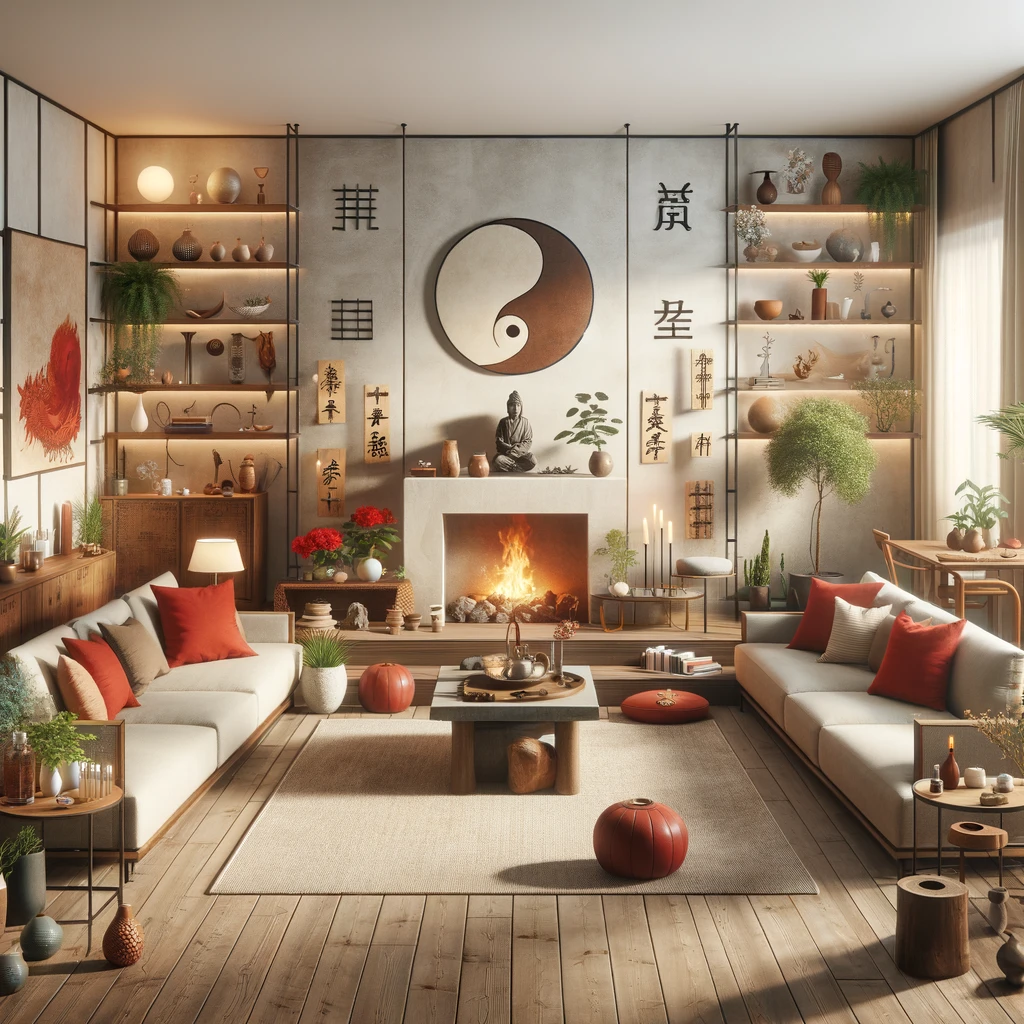
Positive Influence
Seating arrangements hold power. They influence the energy in a living room. The setup should promote a free and clear flow. This aids in creating an atmosphere of comfort and ease.
Chairs and sofas must face each other to foster dialogue. This layout encourages family members to engage more deeply with one another. It’s not just about furniture placement but also about fostering relationships.
Conversation Circles
Creating spaces for conversation is key in feng shui. Arrange seats in a circular or semi-circular pattern to make exchanges natural and effortless.
This shape removes barriers between people, allowing energy to circulate freely among them. It makes guests feel welcome and part of the group immediately upon sitting down.
Relationship Dynamics
The position of seating can affect household dynamics significantly. Each seat has its own level of importance within the space.
For example, the chair farthest from the entrance might be seen as the ‘power seat.’ Placing someone here can subtly influence their role within conversations or gatherings held in this space.
Seats closest to doorways or hallways are less dominant but offer easy access to come and go as one pleases, which may suit some family members better than others.
Color and Texture Choices in Feng Shui Design
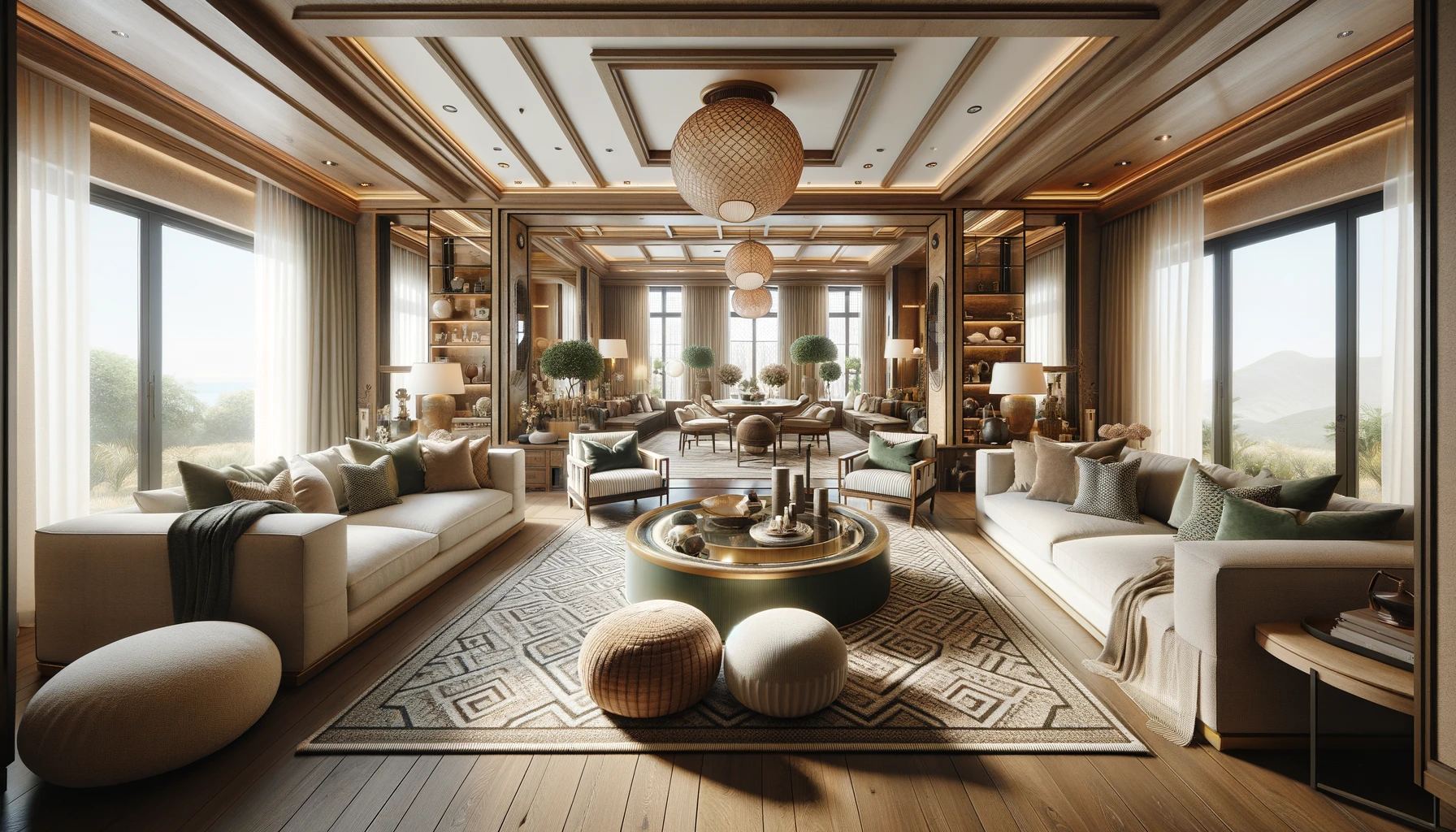
Influence of Color Choices
Color choices play a crucial role in Feng Shui design as they can significantly impact mood and energy levels. For instance, warm colors like red and orange are believed to promote lively conversations and create a welcoming atmosphere. On the other hand, cool colors such as blue and green are thought to evoke calmness and relaxation. By incorporating these color principles into the living room, one can harness their positive effects on emotions and interactions.
Each color is associated with specific elements such as fire, earth, metal, water, or wood. For example, shades of green represent the wood element while white embodies metal. Balancing these elements through color choices is essential for creating harmony within the living space according to Feng Shui principles.
Significance of Texture Selection
In addition to color choices, texture selection also holds significant importance in creating a balanced space according to Feng Shui principles. Smooth textures like silk or satin are linked with elegance and sophistication while rough textures such as wool or burlap bring warmth and coziness into the room.
By incorporating a variety of textures that complement each other harmoniously, one can enhance the overall sensory experience within the living room environment based on Feng Shui guidelines.
How to Choose Colors and Textures
When arranging a living room following Feng Shui principles, it’s important to consider both personal preferences and traditional associations with colors while selecting hues for walls, furniture upholstery, curtains, rugs, etc.
- Start by understanding your personal responses towards different colors – whether they make you feel energized or relaxed.
- Consider utilizing a mix of warm (e.g., reds) and cool (e.g., blues) tones for balance.
- Incorporate natural materials like wood or stone alongside various fabric finishes (smooth vs textured) for an optimal blend of tactile experiences aligned with Feng Shui concepts.
Enhancing Ambiance with Lighting and Mirrors
Using Lighting for Chi Flow and Warm Atmosphere
Lighting plays a crucial role in feng shui principles for living room arrangement. It can enhance the flow of Chi energy, creating a warm and inviting ambiance. To achieve this, consider using floor lamps, table lamps, or even the natural light from windows to illuminate the space evenly. Soft, warm lighting is preferred over harsh or bright lights as it helps to create a soothing atmosphere.
Strategically placing lighting fixtures can also direct Chi flow throughout the living room. For instance, positioning floor lamps near corners or dark areas can help balance out the energy in those spaces. Ensuring that all areas of the room receive adequate lighting contributes to an overall harmonious environment.
Role of Mirrors in Expanding Spaces and Reflecting Positive Energy
Mirrors are essential tools in feng shui design, particularly. Placing mirrors on walls opposite windows can maximize natural light by bouncing it around the room, thus creating a sense of spaciousness.
Moreover, mirrors have the ability to reflect back positive energy into your living space if positioned correctly. They should ideally be placed where they can capture pleasant views from outside or reflect beautiful artwork or accessories within the room.
Best Practices for Positioning Lights and Mirrors in a Living Room
When setting up lighting fixtures in your living room according to feng shui principles:
- Place floor lamps strategically near dark corners to balance out energy.
- Ensure even distribution of soft, warm lighting throughout different areas of the living room.
- Consider incorporating adjustable table lamps that allow you to control brightness based on specific needs.
As for positioning mirrors:
- Place mirrors on walls opposite windows to maximize natural light reflection.
- Avoid placing mirrors directly facing each other as it may create visual distortions.
- Opt for large-sized mirrors if you want them to serve as focal points while enhancing spatial depth.
Utilizing Decorative Elements for Positive Vibes
Role of Decor in Feng Shui
Decor plays a crucial role in promoting positive energy and optimizing the flow of Chi within a living room.It’s important to consider items that align with Feng Shui principles, such as artwork, potted plants, and other decorative elements. These items can significantly impact the overall ambiance and energy within the space.
Artwork has the power to evoke different emotions and feelings, making it an essential element in promoting positive chi. Choosing art pieces that depict serene landscapes or joyful scenes can help create a harmonious atmosphere within the living room. Incorporating artwork with vibrant colors can uplift the energy of the space.
Potted plants are another key decorative element that contributes to fostering positive energy within a living room. Not only do they add a touch of nature to the environment, but they also help purify the air and promote a sense of well-being. By strategically placing potted plants in areas where there is stagnant or negative energy, such as dark corners or spaces with poor ventilation, one can effectively enhance the flow of positive chi.
Tips for Arranging Decor
Arranging decor in accordance with Feng Shui principles is essential for optimizing Chi flow within a living room. Placing decor thoughtfully can help eliminate barriers that obstruct positive energy while creating an environment conducive to relaxation and harmony.
One effective way to optimize Chi flow through decor arrangement is by ensuring that all decorative elements are free from clutter and obstructions. This allows for smooth movement of energy throughout the space without encountering obstacles that may disrupt its natural flow.
Incorporating metal accents into decor arrangements is another valuable tip for promoting positive vibes within a living room based on Feng Shui principles. Metal accents not only add aesthetic appeal but also symbolize clarity and focus while helping dispel negative energies present in the environment.
- Artwork selection
- Placement of potted plants
- Eliminating clutter
- Incorporating metal accents
Promoting Natural Light and Open Spaces
Importance of Natural Light
Natural light plays a crucial role in Feng Shui design, as it is believed to bring positive energy into the living space. The abundance of natural light not only brightens up the room but also uplifts the mood, creating a harmonious atmosphere. In interior design, incorporating natural light can help balance the energy flow within the living room, promoting a sense of well-being and vitality. By allowing sunlight to filter through, it fosters a connection with nature, which is an essential aspect of Feng Shui principles.
In addition to its psychological benefits, natural light also has practical advantages for health and well-being. It provides essential vitamin D that contributes to overall physical wellness. Moreover, maximizing natural light reduces reliance on artificial lighting sources during daylight hours, leading to energy conservation and cost savings.
Benefits of Open Spaces
Creating open spaces within the living room aligns with Feng Shui principles by facilitating the smooth flow of energy or “chi.” When there are no obstructions hindering movement throughout the space, chi can circulate freely, nourishing every corner of the room with positive vibes. This unobstructed flow promotes harmony and balance in one’s living environment.
Open spaces also offer flexibility for arranging furniture according to Feng Shui guidelines without cluttering or overcrowding. A clutter-free environment allows individuals to move around more freely while maintaining visual clarity and organization within their surroundings.
Practical Ways to Maximize Natural Light and Create Open Spaces
To maximize natural light, consider using sheer curtains instead of heavy drapes that block out sunlight completely. Placing mirrors strategically opposite windows reflects incoming natural light across different areas in the living room, amplifying its presence throughout the space. Keeping windows clean ensures that maximum sunlight enters your home.
When designing open spaces within your living room based on Feng Shui principles, opt for furniture arrangements that allow easy navigation without obstructing pathways or limiting movement around key areas such as seating zones or entryways. Incorporating indoor plants not only adds aesthetic appeal but also contributes positively by purifying indoor air quality while symbolizing growth and vitality within your space.
Setting Intentions for a Harmonious Living Space
Role of Intention-Setting
In Feng Shui practice, intention-setting plays a crucial role in creating a harmonious living space. By setting clear intentions, you can direct the flow of energy within your living room, promoting positive vibes and balance. Your intentions act as the guiding force that shapes the atmosphere and ambiance of the space.
Intention-setting is about consciously deciding what you want to cultivate in your environment. Whether it’s peace, tranquility, or vitality, your intentions serve as the foundation for arranging your living room according to Feng Shui principles.
How to Set Intentions
To set intentions for a harmonious and balanced living room based on Feng Shui principles, start by reflecting on how you want the space to feel and function. Consider incorporating elements that align with these intentions, such as choosing calming colors or arranging furniture in a way that encourages social interaction and relaxation.
For instance:
- If you seek peace and serenity, opt for soothing colors like soft blues or gentle greens.
- To promote vitality and energy flow, introduce vibrant accents through artwork or decorative pieces.
- Arrange seating areas to foster connection among family members or guests while maintaining an open layout to encourage smooth energy circulation.
By aligning your physical surroundings with your desired emotional outcomes, you can create a cohesive environment that supports your well-being within the context of Feng Shui.
Connection between Intentions and Energy
Your intentions directly influence the energy of your living room. In Feng Shui philosophy, everything – including thoughts – emits energy. When you intentionally design your living space with specific goals in mind, you infuse it with corresponding energies that resonate throughout the environment.
For example:
- Intending to cultivate peace results in an atmosphere characterized by calmness and harmony.
- Focusing on fostering connections leads to an inviting ambiance conducive to meaningful interactions.
- Emphasizing vitality brings forth an energetic vibe that invigorates both occupants and visitors alike.
Ultimately, by integrating intentional design choices into your living room arrangement based on Feng Shui principles, you can harness positive energies aligned with your aspirations for balance and harmony within this vital area of your home.
Conclusion
You’ve now unlocked the secrets to creating a harmonious living room using Feng Shui principles. By decluttering, balancing elements, and strategically placing furniture, you can enhance the flow of positive energy in your space. Remember, it’s not just about arranging furniture; it’s about cultivating a sanctuary that nurtures your well-being and promotes positivity. So, go ahead, apply these principles, and transform your living room into a tranquil haven where good vibes abound.
Now that you’re equipped with this knowledge, take action and revamp your living room using Feng Shui. Experiment with different arrangements and observe how the energy shifts in your space. Embrace this journey of transformation and let the principles of Feng Shui guide you toward creating a living room that radiates harmony and balance.
Frequently Asked Questions
What is the commanding position in Feng Shui living room design?
In Feng Shui, the commanding position means placing furniture, especially your sofa, so you can see the door without being directly in line with it. It’s like having a mountain behind you—providing support and protection.
How does clearing clutter affect energy flow in my living room?
Clearing clutter allows chi (energy) to flow freely. Imagine water flowing through a stream—blockages cause stagnation. Your space works similarly; remove obstacles for a vibrant and lively living area.
Can I use any color scheme for good Feng Shui in my living room?
Your color choices should create balance using the five elements: Wood, Fire, Earth, Metal, and Water. Think of colors as spices; just the right mix will bring harmony to your dish—or in this case, your living space!
What’s an easy way to enhance ambiance with lighting in Feng Shui?
Soft lighting lifts energy subtly—like moonlight on a serene lake. Use varied light sources at different heights to introduce gentle warmth and depth into your space.
How do decorative elements contribute to positive vibes according to Feng Shui?
Decorative items act like cheerful friends that brighten up your day—they infuse joy and personality into your home while aligning with Feng Shui principles for added positivity.
Why is promoting natural light important in my living room arrangement?
Natural light is like vitamin D for your home—it rejuvenates and energizes both you and the space. Open curtains wide; let sunlight dance across surfaces invitingly.
How do I set intentions for a harmonious living space through Feng Shui?
Think of setting intentions as planting seeds—the thoughts you sow influence what grows around you. Be mindful of what energies you want present while arranging or decorating.
